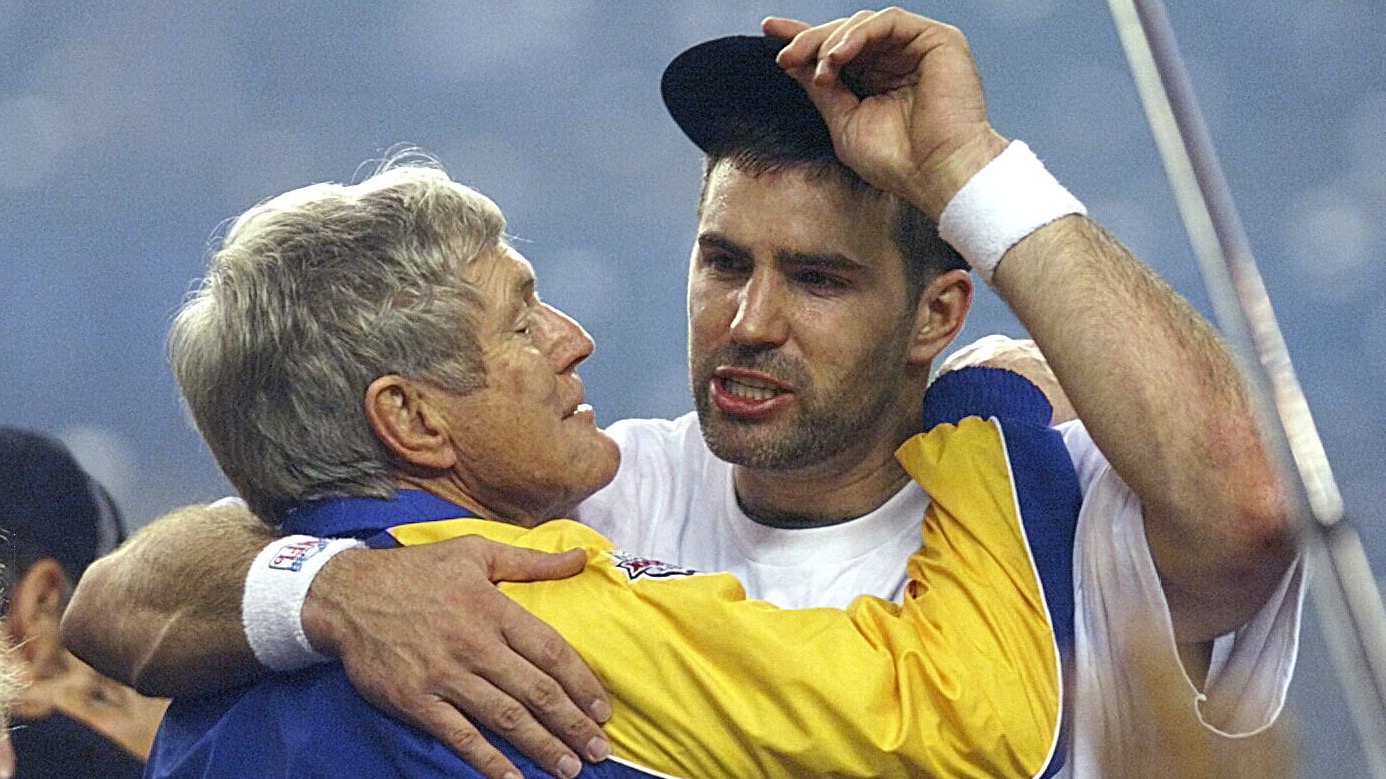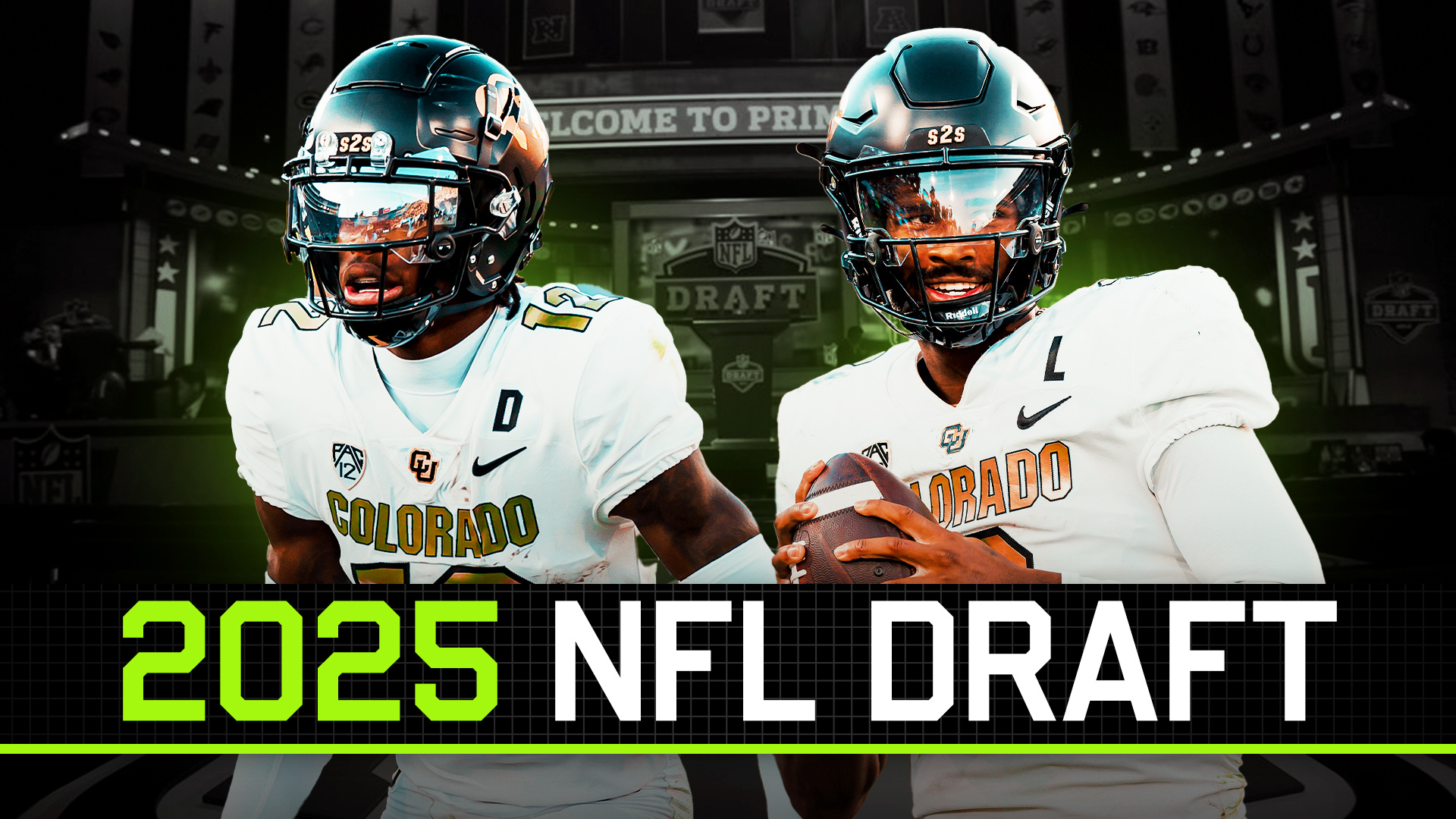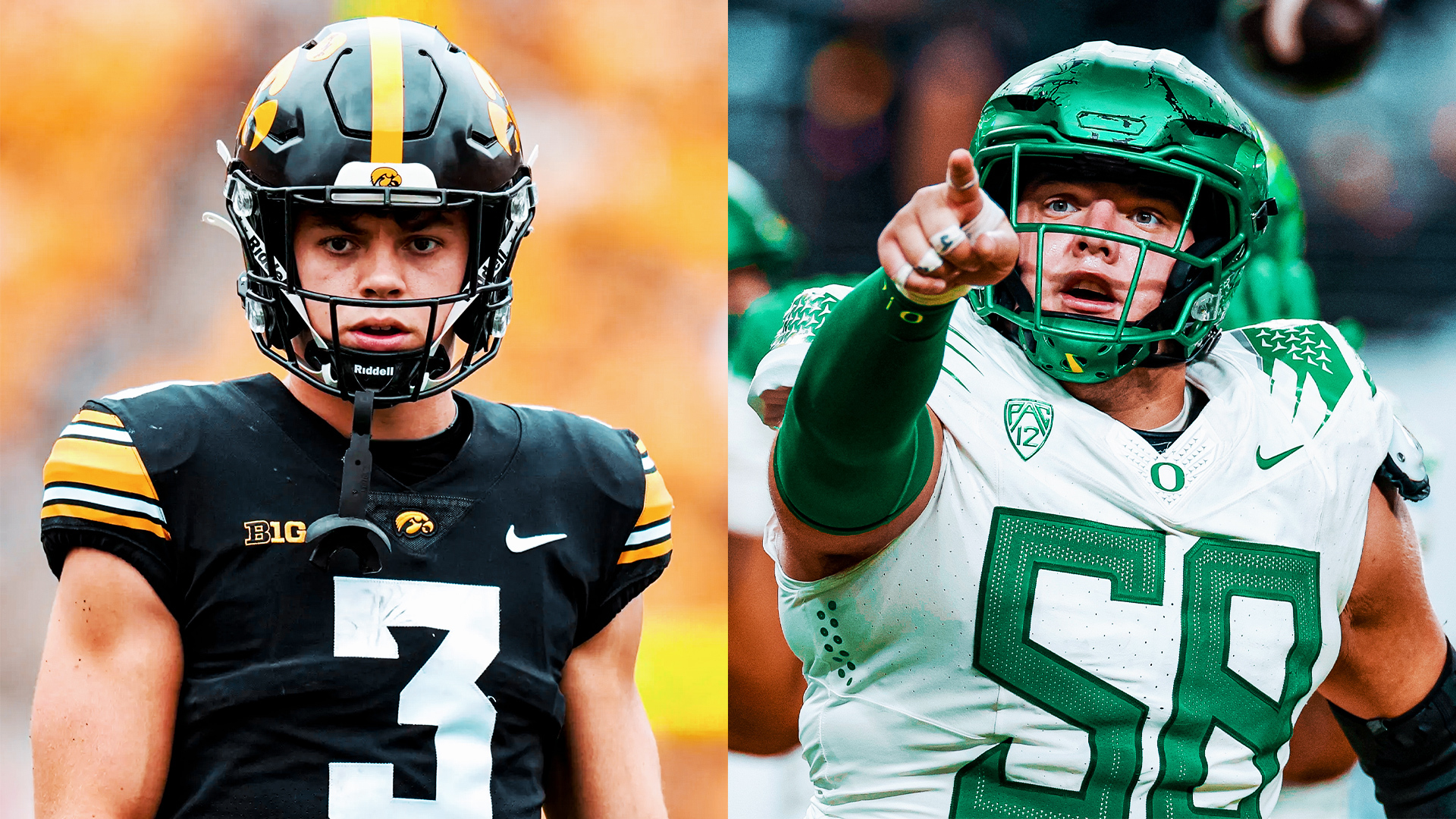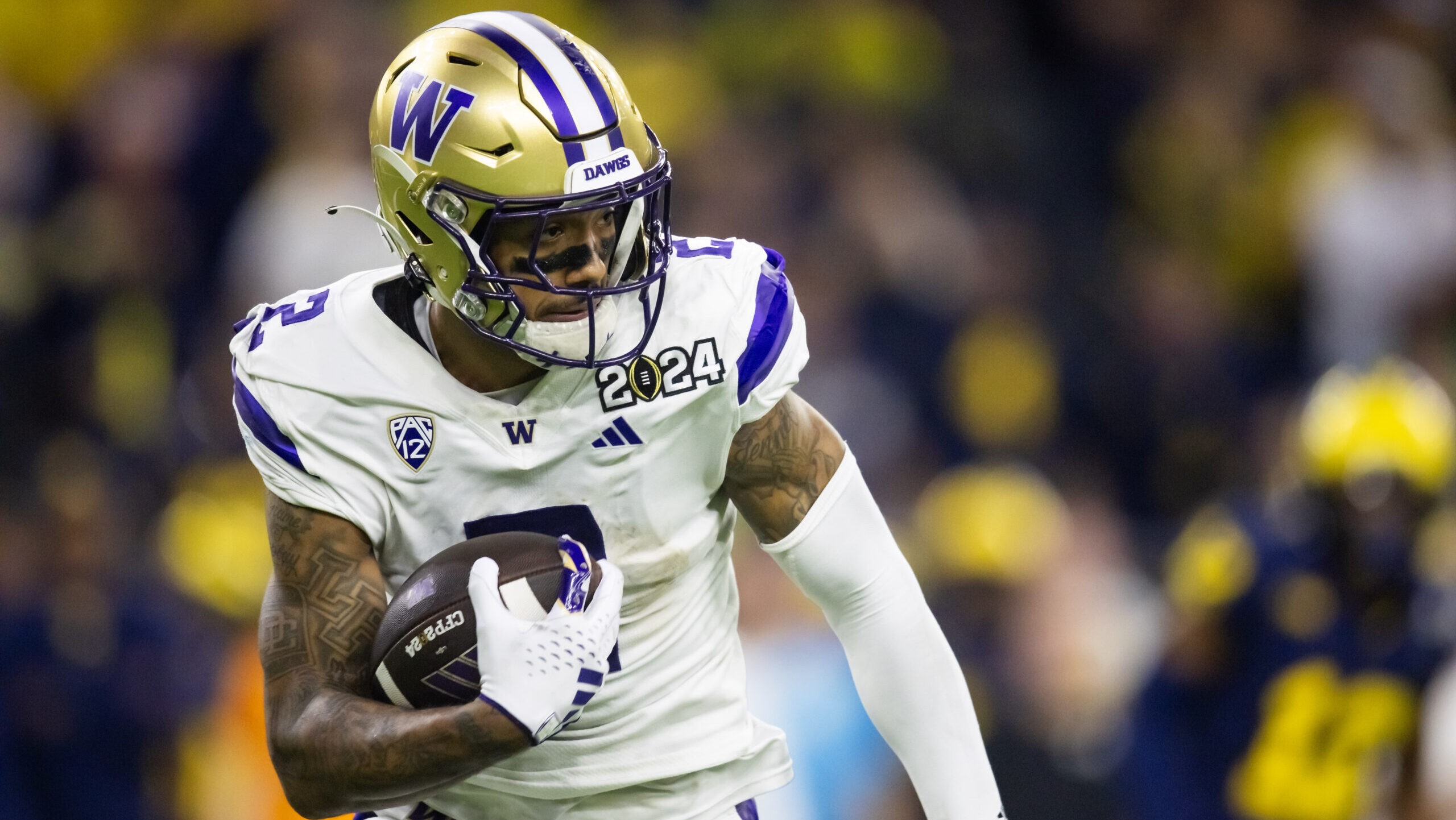Analysis
6/12/23
9 min read
Florida State QB Jordan Travis Flashes Top-Tier Ability
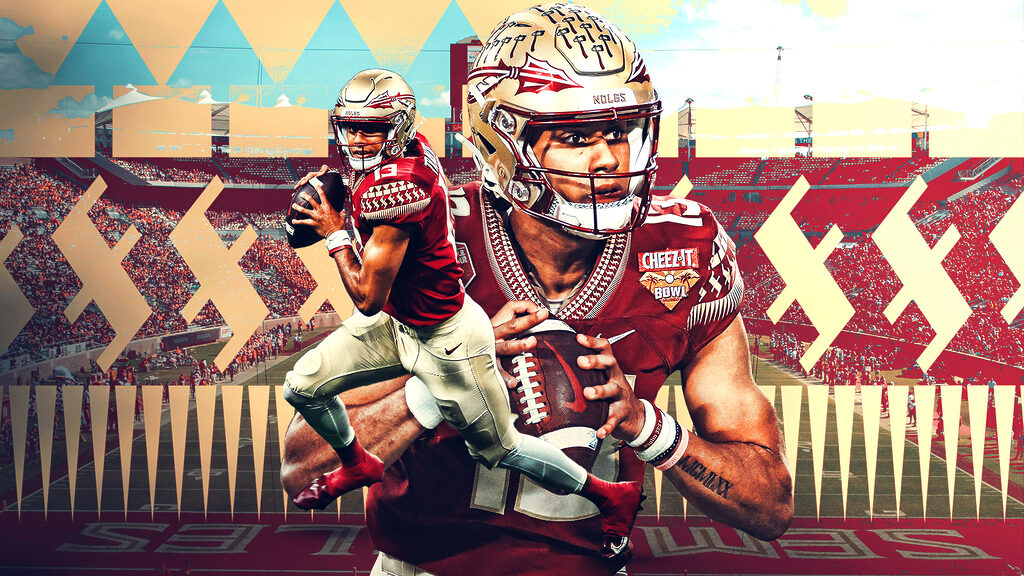
Marc Trestman continues his evaluations of the top quarterback prospects eligible for the 2024 NFL Draft with a breakdown of Florida State QB Jordan Travis' game and how it could translate to the next level.
Others in series: Drake Maye | Caleb Williams | Michael Penix Jr. | Bo Nix | Quinn Ewers | Joe Milton
Jordan Travis Evaluation
Who Is Jordan Travis?
A former three-star recruit, Travis was not widely considered a high-profile prospect entering his collegiate career at Louisville in 2018. He transferred to Florida State in 2019 and ascended to a starting role for six games in 2020. However, he threw just six touchdowns and six interceptions while completing only 55 percent of his passes.
Travis grew as a passer in his second season as a starter, improving his TD:INT ratio (15:6) and completion percentage (62.9 percent). Still, the Seminoles won only five games.
In 2022, Travis took a quantum leap, posting career-best numbers across the board, including a 24:5 TD:INT ratio and 3,214 yards passing while completing 64 percent of his throws. That improvement coincided with the Seminoles doubling their win total and beating Oklahoma in the Cheez-It Bowl.
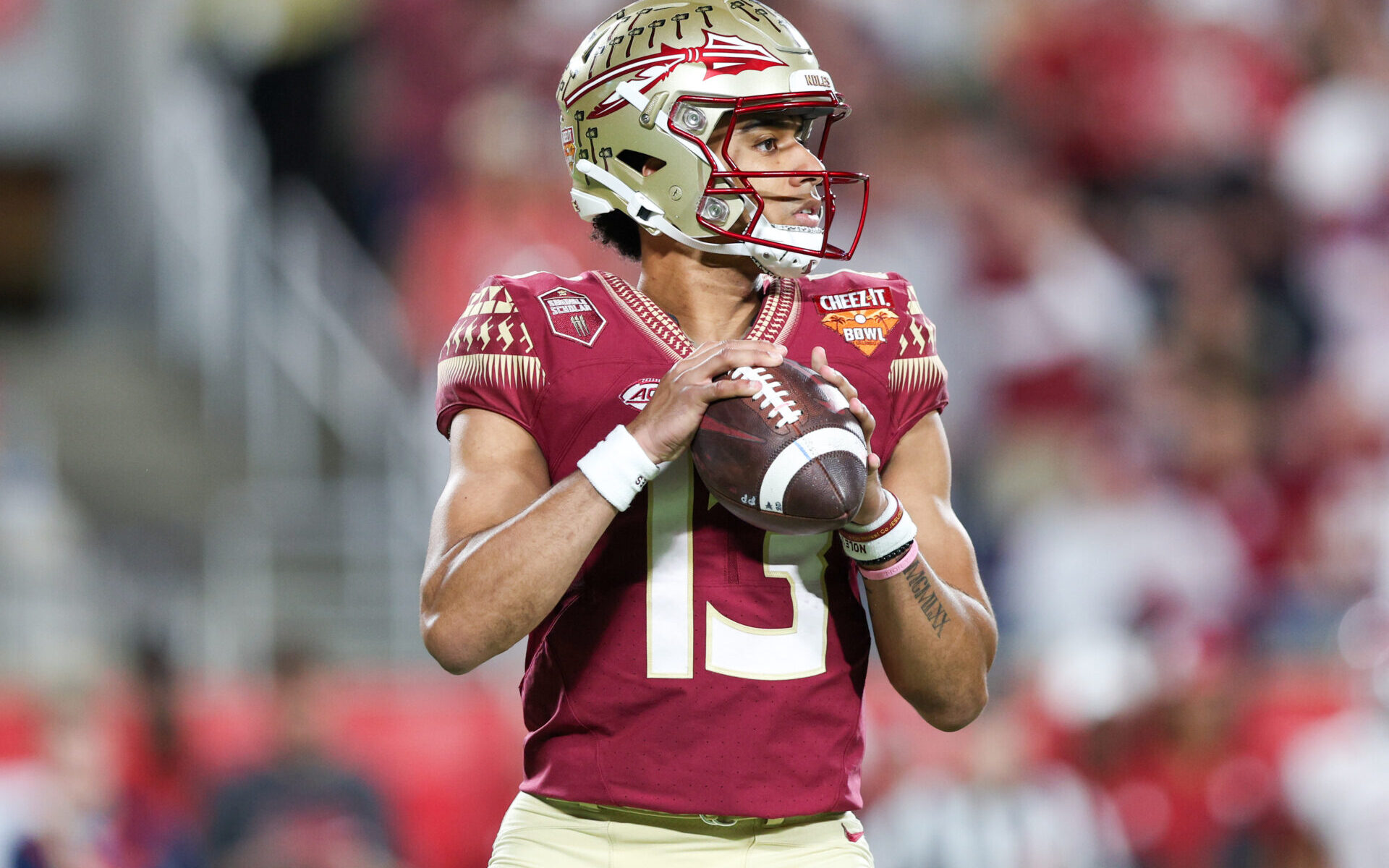
What Jordan Travis Was Asked To Do
Florida State head coach Mike Norvell’s offense featured multiple shotgun formations and NFL concepts with multi-level throws. The system allowed Travis to make progression reads while throwing vertically and horizontally to all parts of the field. The fourth-year signal caller was exclusively in the shotgun during my four-game evaluation (Syracuse, Miami, Florida and Oklahoma). He executed many quick game concepts, as well as drop back and play action. Travis also contributed significantly with his legs, executing movement throws in both directions and rushing for 417 yards and seven touchdowns in 2022.
As Travis enters his fifth year, coach Norvell and he will look to build on their No. 10 overall finish in last season’s final AP Poll.
What Jordan Travis Does Well
While watching four of Travis' games, I saw eye-catching plays that will get the undivided attention of NFL scouts and coaches. As his performances improve and expectations rise, Travis will invite a wide spectrum of opinions. Below is my initial reaction to the tape, which for the most part, is extremely positive.
The first thing that jumps off the tape is Travis’ excellent throwing mechanics from the waist up. His staging of the ball is always high and tight, with the tip of the ball at the “V” of the neck, which promotes ball security and accuracy. What is so outstanding is that, as he takes his left hand off the ball to begin his passing motion, the bottom tip of the ball seldom ever drops below the bottom of his jersey number. This gives him an extremely compact release; the ball is up and out as quickly as any quarterback I have evaluated for The 33rd Team during 2022 and 2023.
Travis’ footwork is highly disciplined and unquestionably well-coached. His drops are consistent and well-coordinated with the structure and depths of routes. Whether on quick game, drop back, or play-action, he clearly understands footwork and getting himself in the right place on platform to deliver.
He is excellent at getting his feet quickly set, transferring his weight from the back foot to the front foot and squaring to the target. Travis uses his base and core with an exaggerated follow-through to create a high-end, explosive over-the-top delivery. This combination of throwing mechanics and footwork yields accuracy, which Travis shows at all levels of the field.
It’s clear that Travis is extremely confident in his arm and has more than sufficient arm strength to throw accurately from the pocket, including on the move or in awkward body positions.
He has the inherent ability — both in the pocket and on the run — to change speeds and trajectory on the ball. While doing so, he shows flashes of pure excellence, delivering deep go routes and post routes while keeping the ball away from the nearest defender and allowing his intended receiver to run through the ball and maximize run after the catch.
From a mental perspective, Travis is clearly poised and consistently calm. He is unquestionably courageous under pressure and can quickly process and make decisions. This allows him to beat the blitz and find his hot receiver.
Travis also shows an understanding of defensive zone coverage concepts and anticipates when receivers will break open and find space. He will look off safeties and finish progressions to his flare control running back.
When Travis leaves the pocket, he is resourceful and dynamic, with “it” factor talent to make plays with his arm and legs. He can make defenders miss in and out of the pocket with good athleticism and a savvy ability to redirect his momentum immediately to avoid tacklers in space. His two red zone touchdown runs against Florida are must-watch for evaluators.
Travis is comfortable escaping to his right or left and keeps his eyes up while on the move, scanning the field for receivers breaking open up field. He has complete confidence to deliver on the move in either direction or to tuck the ball and run. This athletic dynamism is something every offensive coordinator is looking for and something that every defensive coordinator who made the right call fears each week.
At the end of runs upfield, he shows an understanding of how to protect himself by properly sliding to avoid taking a hit. He might have learned how to slide from his older brother, Devon Travis, who was a second baseman for the Toronto Blue Jays and a star infielder at Florida State a decade ago.
How Travis Can Grow
Up to this point, readers may feel I am ready to induct Travis into the Hall of Fame. I hope that will be the case someday, but he still has plenty of work to do.
While Travis’ immense confidence in his arm talent often serves him well, there are times when he is overconfident and uncharacteristically reckless, forcing the ball into coverage.
I also saw a defender sack him behind the line of scrimmage while Travis was moving to his right outside the pocket when he easily could have thrown the ball away. This caused the offense to lose valuable yardage and attributed a sack to his offensive line that they were not responsible for.
He also is too relaxed with his ball security while running outside the pocket, which could result in lost fumbles.
The quickness of Travis’s release obviously will impress NFL evaluators, but what also will catch their attention is how he follows through with his lower body and right leg. At times he looks awkward on the finish – like a pitcher with a high right leg coming off the mound. It would be an unnatural motion for most quarterbacks. Yet, Travis completes the motion square to the target, and you cannot argue with the accurate results.
Travis could stand to improve his ability to vary his arm slot and throw from a sidearm or three-quarters release when under pressure, but this did not impact his ability to get the ball off on time with anticipation and accuracy in the games I watched.
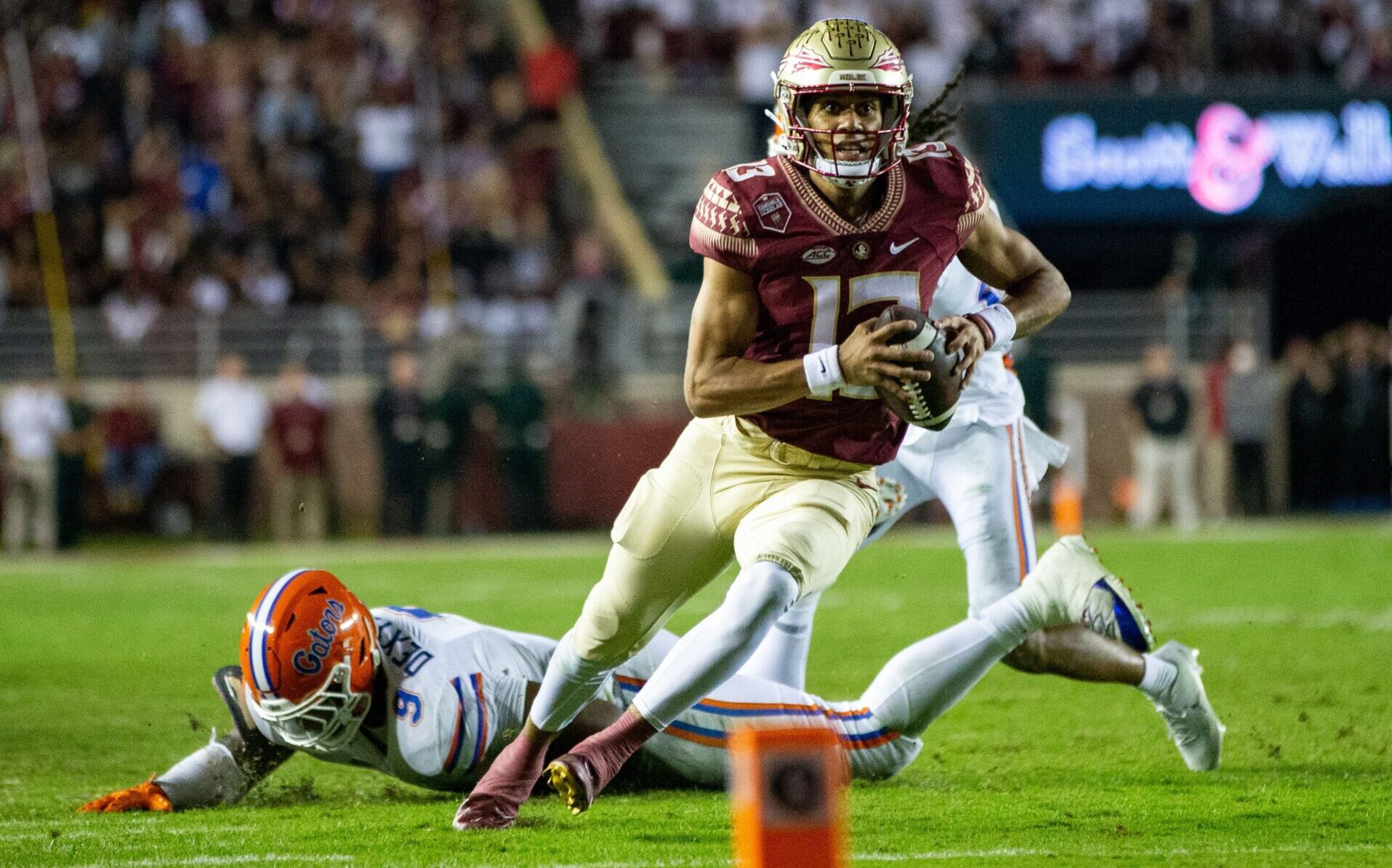
Comparing Travis to Other Quarterbacks
Travis is undeniably productive, accurate, athletic, poised and mechanically sound, but he does not come in the same physical package as many of the other high-end prospects in the 2023 and 2024 quarterback classes.
Though Florida State lists him at 6-foot-1 and 212 pounds, he appears smaller in the pocket on tape. However, that will all be assessed soon enough, and I hope his play in 2023 far surpasses his physical measurements.
When comparing Travis to Caleb Williams, the presumed No. 1 player in the 2024 class, Williams appears to be more innately accurate and has superior playmaking prowess, though Travis appears more mechanically sound and equally as athletic.
Within the pocket, Travis’ ball staging and quick release are reminiscent of 2023 third-round pick Hendon Hooker, though Travis clearly is a more dynamic athlete.
With similar physical stature and strong mechanics, Travis might receive comparisons to 2023 fourth-rounder Jake Haener, but Haener appears slightly smoother and niftier in the pocket on tape.
For current NFL players, Travis — with his quick release and ability to win from the pocket — compares favorably to high-end backups such as Colt McCoy and Case Keenum.
Overall, despite his apparent lack of size (which, at the end of the day, is minimal), Travis clearly has high-end ability. Although this evaluation suggests he is on a similar level to those I have studied thus far, I am not ready to call Travis a top-tier quarterback in the 2024 Draft class, though he unquestionably flashes top-tier ability.
With another season in Coach Norvell’s offense, I expect continuous improvement in Travis’ game that will force evaluators to think long and hard about where to place him on next year’s draft board.
Marc Trestman is a former NFL, CFL and college coach. After more than a decade as an offensive coordinator and quarterback coach in the NFL, he coached in four Grey Cups in the CFL, winning three over seven years with Montreal and Toronto before becoming head coach of the Chicago Bears. Follow him on Twitter at @CoachTrestman.



